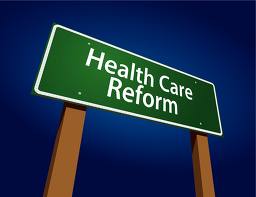By David Trend
“The more I became immersed in the study of stigmatized mental illness, the more it astonishing to me that any such phenomenon should exist at all,” writes Robert Lundin, a member of the Chicago Consortium for Stigma Research. “I believe that serious and persistent mental illnesses, like the one I live with, are clearly an inexorably no-fault phenomena that fully warrant being treated with the same gentleness and respect as multiple-sclerosis, testicular cancer or sickle-cell anemia.”[i] Here Lundin names a central of problem in the social construction of mental illness: the misunderstanding of conditions affecting the mind as somehow different from other biological illness. The misrecognition renders mental illness prone to the judgmental attributions discussed by Susan Sontag in her 1973 book Illness as Metaphor. To Sontag, contemporary society reverses ancient views of sickness as a reflection of the inner self. In this new view, the inner self is seen as actively causing sickness––through smoking, overeating, addictive behavior, and bad habits: “The romantic idea that disease expresses the character is invariably extended to exert that the character causes the disease–because it is not expressed itself. Passion moves inward, striking within the deepest cellular recesses.”[ii] But as before, the sick person is to blame for the illness.
 Such sentiments are especially vindictive when a mentally ill person commits a crime. Understandably perhaps, clinical terms like “mental illness” quickly acquire malevolent meanings in the public mind––even though the mentally ill statistically are no more prone to criminality than anyone else. Sometimes this semiotic slippage causes public panic over commonplace disorders. Consider the case of Adam Lanza, the young man who in 2013 shot 26 children and adults at the Sandy Hook Elementary School in Newton, Massachusetts. While mental health analysts speculate that an acute psychotic episode prompted his violence, Lanza never had been diagnosed with a serious mental illness. As reporters scrambled for a story, much was made of Lanza’s childhood symptoms of Asperger’s syndrome, a form of high-functioning autism. The repeated mention of this disorder in news coverage triggered wrong-headed fears nationally of the murderous potential in other autistic kids. According the Centers for Disease Control (CDC), approximately 1 in 50 people (1.5-million) fall somewhere on the autistic spectrum, 80 percent of whom are boys.[iii] This has prompted improved diagnostic measures, which in turn have resulted in an apparent rise in autism cases in recent years––up 78 percent from a decade ago––and made autism a source of acute anxiety for many new parents. Continue reading “Stigma and Mental Illness”
Such sentiments are especially vindictive when a mentally ill person commits a crime. Understandably perhaps, clinical terms like “mental illness” quickly acquire malevolent meanings in the public mind––even though the mentally ill statistically are no more prone to criminality than anyone else. Sometimes this semiotic slippage causes public panic over commonplace disorders. Consider the case of Adam Lanza, the young man who in 2013 shot 26 children and adults at the Sandy Hook Elementary School in Newton, Massachusetts. While mental health analysts speculate that an acute psychotic episode prompted his violence, Lanza never had been diagnosed with a serious mental illness. As reporters scrambled for a story, much was made of Lanza’s childhood symptoms of Asperger’s syndrome, a form of high-functioning autism. The repeated mention of this disorder in news coverage triggered wrong-headed fears nationally of the murderous potential in other autistic kids. According the Centers for Disease Control (CDC), approximately 1 in 50 people (1.5-million) fall somewhere on the autistic spectrum, 80 percent of whom are boys.[iii] This has prompted improved diagnostic measures, which in turn have resulted in an apparent rise in autism cases in recent years––up 78 percent from a decade ago––and made autism a source of acute anxiety for many new parents. Continue reading “Stigma and Mental Illness”

 $250 bail and ended up in a jail cell on Rikers Island.
$250 bail and ended up in a jail cell on Rikers Island.








 During this same time period, Washington, DC has been consumed by a government shutdown, with lawmakers and policymakers trying to determine how to rein in our country’s financial burdens and overspending. Unfortunately, as federal and state governments look to cut budgets at every turn, mental and behavioral health services are often on the chopping block first. Financial cuts, compounded with US stigma often applied to mental health troubles and disparate access to services across the county, mean that those who need services most are often those left without proper care.
During this same time period, Washington, DC has been consumed by a government shutdown, with lawmakers and policymakers trying to determine how to rein in our country’s financial burdens and overspending. Unfortunately, as federal and state governments look to cut budgets at every turn, mental and behavioral health services are often on the chopping block first. Financial cuts, compounded with US stigma often applied to mental health troubles and disparate access to services across the county, mean that those who need services most are often those left without proper care.



